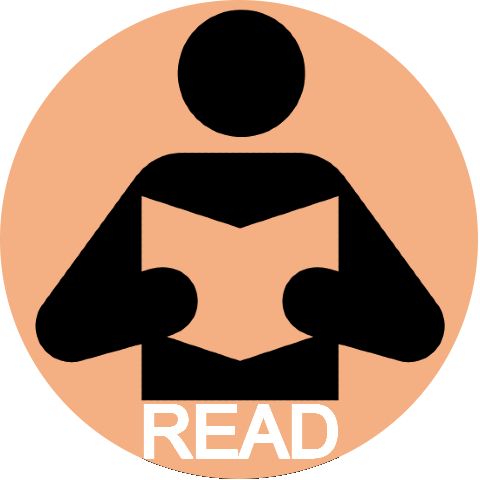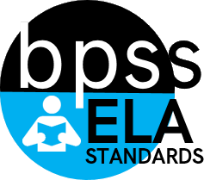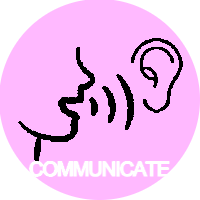ELA-11.R  ELA-11.R ELA-11.R Strand  | (R) Reading
Learners will comprehend, analyze, and evaluate literary and informational texts in various formats, genres, and levels of complexity.
|
Clusters- (C) Comprehension
Learners will read to understand various complex literary and informational texts.
- (TA) Text Analysis
Learners will analyze, interpret, and evaluate complex literary and informational texts that include a wide variety of genres and formats.
Calculation Method for StrandsStrands are larger groups of related standards. The Strand Grade is a calculation of all the related standards. Click on the standard name below each Strands to access the learning targets and rubrics/ proficiency scales
for individual standards within the domain. |
|
ELA-11.R.02  | 11th (ELA) Targeted Standard (R) Reading (C) Comprehension
Learners will read to understand a variety of complex literary and informational texts.
|
ELA-11.R.02 Comprehend a variety of texts with multiple levels of complexity while developing inferences and providing relevant textual evidence and reasoning.
 Proficiency Scale Proficiency Scale
Progressions
Standard R.02: Text Comprehension/Inferences- ELA-00.R.02 Respond to a variety of texts, photographs, or illustrations before, during, and after shared reading or other text-listening experiences to compare, contrast, predict, or infer.
- ELA-01.R.02 Ask and answer questions about a variety of texts, genres, photographs, or illustrations before, during, and after shared reading or other text-listening experiences to compare, contrast, predict, or infer.
- ELA-02.R.02 Ask and answer questions about key details before, during, and after reading a variety of literary and informational texts to compare, contrast, predict, or infer.*
- ELA-03.R.02 Ask and answer questions about key details before, during, and after reading a variety of genres, literary, and informational texts using text evidence to compare, contrast, predict, and infer.*
- ELA-04.R.02 Make inferences while reading a variety of genres, literary, and informational texts; providing text evidence.*
- ELA-05.R.02 Make inferences drawn from the text during and after reading a variety of genres, literary, and informational texts.*
- ELA-06.R.02 Comprehend a variety of texts while developing inferences and providing supportive textual evidence.
- ELA-07.R.02 Comprehend a variety of texts while developing inferences and providing supportive textual evidence and reasoning.
- ELA-08.R.02 Comprehend a variety of texts while developing inferences and providing relevant textual evidence and reasoning.
- ELA-09.R.02 Comprehend a variety of texts with multiple levels of complexity while developing inferences and providing relevant textual evidence and reasoning.
- ELA-10.R.02 Comprehend a variety of texts with multiple levels of complexity while developing inferences and providing relevant textual evidence and reasoning.
- ELA-11.R.02 Comprehend a variety of texts with multiple levels of complexity while developing inferences and providing relevant textual evidence and reasoning.
- ELA-12.R.02 Comprehend a variety of texts with multiple levels of complexity while developing inferences and providing relevant textual evidence and reasoning.
|
|
ELA-11.R.03a  | 11th (ELA) Targeted Standard (R) Reading (C) Comprehension
Learners will read to understand a variety of complex literary and informational texts.
|
ELA-11.R.03a Summarize and/or paraphrase nonfiction texts objectively, including relevant information.
 Proficiency Scale Proficiency Scale
Progressions
Standard R.03a: Summarizing Nonfiction Text- ELA-00.R.03a Tell about the informational text, photographs, or illustrations before, during, or after a shared reading or other text-listening experience.*
- ELA-01.R.03a Identify the topic of an informational text, photograph, or illustration during or after a shared reading or other text-listening experiences.*
- ELA-02.R.03a Identify the main idea with supporting details during or after reading an informational text or passage.*
- ELA-03.R.03a Summarize the main idea(s) with supporting details during or after reading an informational text or passage.*
- ELA-04.R.03a Summarize an informational text or passage, stating the main idea(s) and providing supporting details.*
- ELA-05.R.03a Summarize an informational text or passage, stating the main idea(s) and providing supporting details.*
- ELA-06.R.03a Summarize nonfiction texts objectively, including relevant details.
- ELA-07.R.03a Summarize and/or paraphrase nonfiction texts objectively, including relevant details and avoiding unnecessary information.
- ELA-08.R.03a Summarize and/or paraphrase nonfiction texts objectively, including relevant details and avoiding unnecessary information.
- ELA-09.R.03a Summarize and/or paraphrase nonfiction texts objectively, including relevant information.
- ELA-10.R.03a Summarize and/or paraphrase nonfiction texts objectively, including relevant information.
- ELA-11.R.03a Summarize and/or paraphrase nonfiction texts objectively, including relevant information.
- ELA-12.R.03a Summarize and/or paraphrase nonfiction texts objectively, including relevant information.
|
|
ELA-11.R.03b  | 11th (ELA) Targeted Standard (R) Reading (C) Comprehension
Learners will read to understand a variety of complex literary and informational texts.
|
ELA-11.R.03b Summarize and paraphrase literary texts objectively, including relevant information.
 Proficiency Scale Proficiency Scale
Progressions Standard R.03b: Summarize Literary Text- ELA-00.R.03b Tell about characters and setting in a literary text during or after a shared reading or other text-listening experience.*
- ELA-01.R.03b Identify characters, setting, and plot in a literary text during or after a shared reading or other text-listening experience.*
- ELA-02.R.03b Retell the plot to include the beginning, middle, and end of a literary text after reading.*
- ELA-03.R.03b Summarize the story by including major story elements after reading a literary text or passage.*
- ELA-04.R.03b Summarize the story by including major story elements after reading a literary text or passage.*
- ELA-05.R.03b Summarize a story by including major story elements after reading a literary text.*
- ELA-06.R.03b Summarize literary texts objectively, including relevant details.
- ELA-07.R.03b Summarize and/or paraphrase literary texts objectively, including relevant details and avoiding unnecessary information.
- ELA-08.R.03b Summarize and/or paraphrase literary texts objectively, including relevant details and avoiding unnecessary information.
- ELA-09.R.03b Summarize and/or paraphrase literary texts objectively, including relevant information.
- ELA-10.R.03b Summarize and/or paraphrase literary texts objectively, including relevant information.
- ELA-11.R.03b Summarize and paraphrase literary texts objectively, including relevant information.
- ELA-12.R.03b Summarize and paraphrase literary texts objectively, including relevant information.
|
|
ELA-11.R.04  | 11th (ELA) Targeted Standard (R) Reading (C) Comprehension
Learners will read to understand a variety of complex literary and informational texts.
|
ELA-11.R.04 Determine the main idea(s), claim(s), or theme(s) as they develop over the course of the text and interact with each other, and support them with textual evidence.
 Proficiency Scale Proficiency Scale
Progressions
Standard R.04: Main Idea/Claim/Theme- ELA-04.R.04 Identify a theme based on textual evidence.*
- ELA-05.R.04 Determine a claim or theme based on textual evidence.*
- ELA-06.R.04 Determine main idea(s), claim(s), or theme(s) and provide supporting textual evidence.
- ELA-07.R.04 Determine main idea(s), claim(s), or theme(s) and provide supporting textual evidence and reasoning.
- ELA-08.R.04 Determine a main idea(s), claim(s), or theme(s) and provide relevant textual evidence and supportive reasoning.
- ELA-09.R.04 Determine the main idea(s), claim(s), or theme(s) as they develop over the course of the text and support them with textual evidence.
- ELA-10.R.04 Determine the main idea(s), claim(s), or theme(s) as they develop over the course of the text and support them with textual evidence.
- ELA-11.R.04 Determine the main idea(s), claim(s), or theme(s) as they develop over the course of the text and interact with each other, and support them with textual evidence.
- ELA-12.R.04 Determine the main idea(s), claim(s), or theme(s) as they develop over the course of the text and interact with each other, and support them with textual evidence.
|
|
ELA-11.R.05  | 11th (ELA) Targeted Standard (R) Reading (C) Comprehension
Learners will read to understand a variety of complex literary and informational texts.
|
ELA-11.R.05 Determine the meaning, purpose, and impact of words and phrases as they are used in the text, including academic vocabulary, figurative, ambiguous, and connotative meanings.
 Proficiency Scale Proficiency Scale
Progressions Standard R.05: Use Text to Determine Word Meaning- ELA-00.R.05 Determine the meaning of unknown and multiple-meaning words and phrases through read-alouds or other text-listening experiences.*
- ELA-01.R.05 Determine the meaning of unknown and multiple-meaning words and phrases through read-alouds or other text-listening experiences.*
- ELA-02.R.05 Determine the meaning of unknown words and phrases through a variety of text experiences.*
- ELA-03.R.05 Determine the meaning of unknown and multi-meaning words within a text.*
- ELA-04.R.05 Determine the meaning of unknown and multiple-meaning words and phrases within a text.*
- ELA-05.R.05 Determine the meaning of unknown and multiple-meaning words and phrases within a text.*
- ELA-06.R.05 Determine the meaning of words and phrases as they are used in the text, including figurative, denotative, and connotative meanings.
- ELA-07.R.05 Determine the meaning and purpose of words and phrases as they contribute to the text, including figurative, denotative, and connotative meanings.
- ELA-08.R.05 Determine the meaning and purpose of words and phrases as they contribute to the text, including figurative, denotative, and connotative meanings.
- ELA-09.R.05 Determine the meaning and purpose of words and phrases as they are used in the text, including academic vocabulary, figurative, ambiguous, and connotative meanings.
- ELA-10.R.05 Determine the meaning and purpose of words and phrases as they are used in the text, including academic vocabulary, figurative, ambiguous, and connotative meanings.
- ELA-11.R.05 Determine the meaning, purpose, and impact of words and phrases as they are used in the text, including academic vocabulary, figurative, ambiguous, and connotative meanings.
- ELA-12.R.05 Determine the meaning, purpose, and impact of words and phrases as they are used in the text, including academic vocabulary, figurative, ambiguous, and connotative meanings.
|
|
ELA-11.R.06  | 11 (ELA) Targeted Standard (R) Reading (TA) Text Analysis
Learners will analyze, interpret, and evaluate complex literary and informational texts that include a wide variety of genres and formats.
|
ELA-11.R.06 Analyze and evaluate how the author's choice in structure, form, and format supports the purpose, contributes to the meaning, or impacts the audience.
 Proficiency Scale Proficiency Scale
Progressions Standard R.06: Text Features and Structure - ELA-00.R.06 Identify photographs, illustrations, and labels during or after a shared reading or other text-listening experience.
- ELA-01.R.06 Recognize basic text features during or after a shared reading or other text-listening experience.
- ELA-02.R.06 Identify text features and use previously learned text features to read and understand a text or passage.*
- ELA-03.R.06 Use text features and previously learned text features to read and understand a text or passage.*
- ELA-04.R.06 Determine the structure of an informational text:
- ELA-05.R.06 Describe the structure of informational texts:
- ELA-06.R.06 Describe how a paragraph, chapter, stanza, or section fits into the overall structure of a text and contributes to the development of ideas.
- ELA-07.R.06 Analyze the structure an author uses to organize a text, including how the major sections or stanzas contribute to the whole and the development of ideas, and the overall purpose of the text.
- ELA-08.R.06 Analyze the structure an author uses to organize a text, including how sections, paragraphs, stanzas, and/or particular sentences contribute to the development of ideas and the overall purpose of the text.
- ELA-09.R.06 Analyze how the author's choice in structure, form, and format supports the purpose, contributes to the meaning, or impacts the audience.
- ELA-10.R.06 Analyze how the author's choice in structure, form, and format supports the purpose, contributes to the meaning, or impacts the audience.
- ELA-11.R.06 Analyze and evaluate how the author's choice in structure, form, and format supports the purpose, contributes to the meaning, or impacts the audience.
- ELA-12.R.06 Analyze and evaluate how the author's choice in structure, form, and format supports the purpose, contributes to the meaning, or impacts the audience.
|
|
ELA-11.R.07  | 11th (ELA) Targeted Standard (R) Reading (TA) Text Analysis
Learners will analyze, interpret, and evaluate complex literary and informational texts that include a wide variety of genres and formats.
|
ELA-11.R.07 Analyze the cumulative impact of specific style, syntax, and word choices on meaning, mood, and tone, including figurative and ambiguous language.
 Proficiency Scale Proficiency Scale
Progressions Standard R.07: Literary Devices - ELA-03.R.07 Identify examples of literary devices:
- ELA-04.R.07 Identify and use literary devices:
- ELA-05.R.07 Determine how literary devices contribute to the meaning of a text:*
- ELA-06.R.07 Describe how an author uses figurative language and specific word choice to affect meaning in a text.
- ELA-07.R.07 Analyze how an author uses figurative language and specific word choice to affect the meaning in a text.
- ELA-08.R.07 Analyze how an author uses figurative language and specific word choice to affect the meaning and tone.
- ELA-09.R.07 Analyze the impact of specific style, syntax, and word choices on meaning, mood, and tone, including figurative and ambiguous language.
- ELA-10.R.07 Analyze the impact of specific style, syntax, and word choices on meaning, mood, and tone, including figurative and ambiguous language.
- ELA-11.R.07 Analyze the cumulative impact of specific style, syntax, and word choices on meaning, mood, and tone, including figurative and ambiguous language.
- ELA-12.R.07 Analyze the cumulative impact of specific style, syntax, and word choices on meaning, mood, and tone, including figurative and ambiguous language.
|
|
ELA-11.R.08

|
11th (ELA) Targeted Standard
(R) Reading
(TA) Text Analysis
Learners will analyze, interpret, and evaluate complex literary and informational texts that include a wide variety of genres and formats.
|
ELA-11.R.08 Analyze the development and interaction of literary elements and determine how they impact meaning, using strong and thorough textual evidence to support the analysis.
 Proficiency Scale Proficiency Scale
Sub-Standards
- (a.) Analyze how multiple complex characters and literary elements (e.g., symbolism, mood, setting, etc.) interact and develop over the course of a text, interact with other elements, and advance the plot or develop the theme(s).
- (b.) Analyze how the character or author's point of view is influenced by background, time period, environment, and culture and how it affects the telling of a story.
- (c.) Analyze and evaluate how two or more texts within or across time periods treat similar themes or topics.
Progressions Standard R.08: Analysis and Comparison of Literary Texts
- ELA-00.R.08 Use a variety of fiction texts.
- ELA-01.R.08 Use a variety of fiction texts.
- ELA-02.R.08 Use a variety of fiction and poetry texts.
- ELA-03.R.08 Analyze a variety of fiction and poetry texts.
- ELA-04.R.08 Analyze a variety of fiction and poetry texts.
- ELA-05.R.08 Analyze a variety of fiction and poetry texts.
- ELA-06.R.08 Analyze a variety of fiction texts using textual evidence for support.
- ELA-07.R.08 Analyze a variety of fiction texts using textual evidence for support.
- ELA-08.R.08 Analyze a variety of fiction texts using textual evidence for support.
- ELA-09.R.08 Analyze the development and interaction of literary elements and determine how they impact meaning, using strong textual evidence to support the analysis.
- ELA-10.R.08 Analyze the development and interaction of literary elements and determine how they impact meaning, using strong textual evidence to support the analysis.
- ELA-11.R.08 Analyze the development and interaction of literary elements and determine how they impact meaning, using strong and thorough textual evidence to support the analysis.
- ELA-12.R.08 Analyze the development and interaction of literary elements and determine how they impact meaning, using strong and thorough textual evidence to support the analysis.
|
|
ELA-11.R.09

|
11th (ELA) Targeted Standard
(R) Reading
(TA) Text Analysis
Learners will analyze, interpret, and evaluate complex literary and informational texts that include a wide variety of genres and formats.
|
ELA-11.R.09 Analyze the development and interaction of informational and argumentative elements over the course of a nonfiction text and how they impact purpose using strong and thorough textual evidence to support the analysis.
 Proficiency Scale Proficiency Scale
Sub-Standards
- (a.) Analyze an author's point of view or purpose and possible biases in a text; compare texts from differing perspectives; and analyze how the author's style, content, characterization, and presentation support the author's purposes.
- (b.) Analyze and evaluate various accounts of a subject in different media, including determining which details are emphasized or omitted in each account.
- (c.) Delineate and evaluate how a text's argumentative reasoning, rhetorical techniques, and/or logical fallacies support or undermine the author's purpose and affect the audience.
Progressions Standard R.09: Synthesis and Analysis of Informational Text
- ELA-03.R.09 Determine the most important points and key details presented in two nonfiction texts on the same topic.
- ELA-04.R.09 Integrate information from two texts on the same topic.*
- ELA-05.R.09 Integrate information from several texts or media on the same informational topics.
- ELA-06.R.09 Analyze a variety of nonfiction texts using textual evidence for support.
- ELA-07.R.09 Analyze a variety of nonfiction texts using textual evidence for support.
- ELA-08.R.09 Analyze a variety of nonfiction texts using textual evidence for support.
- ELA-09.R.09 Analyze the development and interaction of informational and argumentative elements over the course of a nonfiction text and how they impact purpose using textual evidence to support the analysis.
- ELA-10.R.09 Analyze the development and interaction of informational and argumentative elements over the course of a nonfiction text and how they impact purpose using textual evidence to support the analysis.
- ELA-11.R.09 Analyze the development and interaction of informational and argumentative elements over the course of a nonfiction text and how they impact purpose using strong and thorough textual evidence to support the analysis.
- ELA-12.R.09 Analyze the development and interaction of informational and argumentative elements over the course of a nonfiction text and how they impact purpose using strong and thorough textual evidence to support the analysis.
|
|


 (C)
(C)
 (R)
(R)
 (Wr)
(Wr)
 (IR)
(IR)

